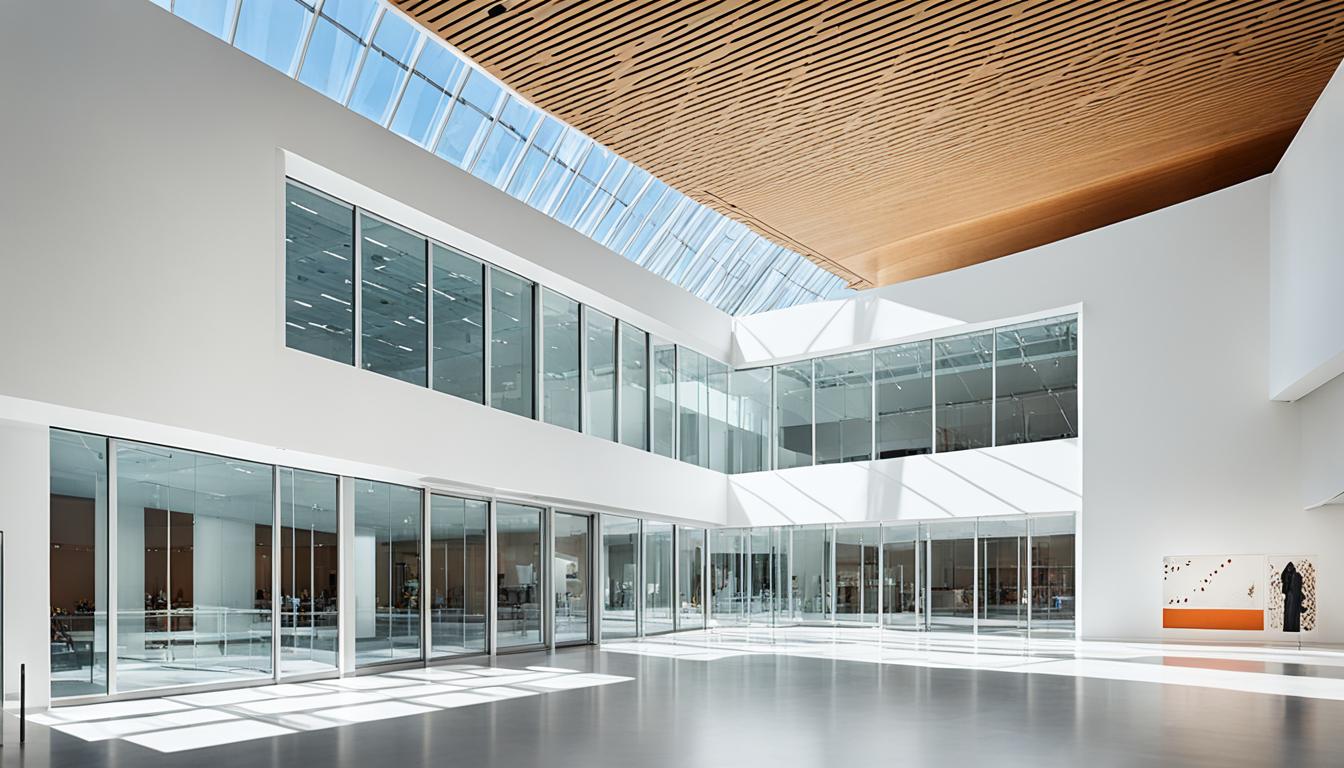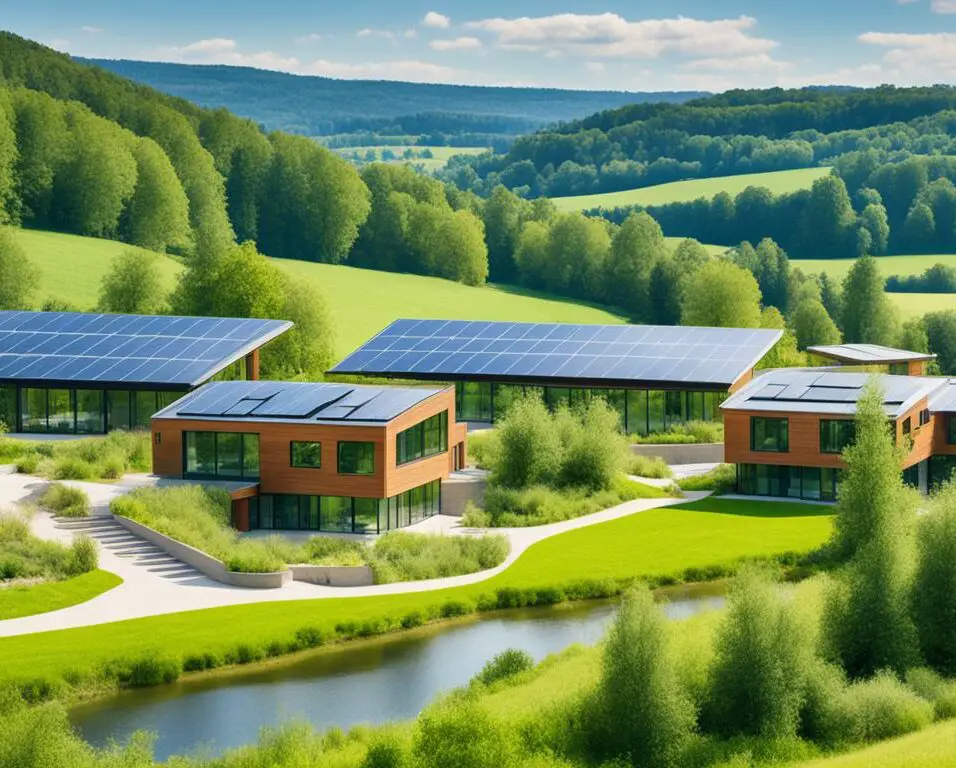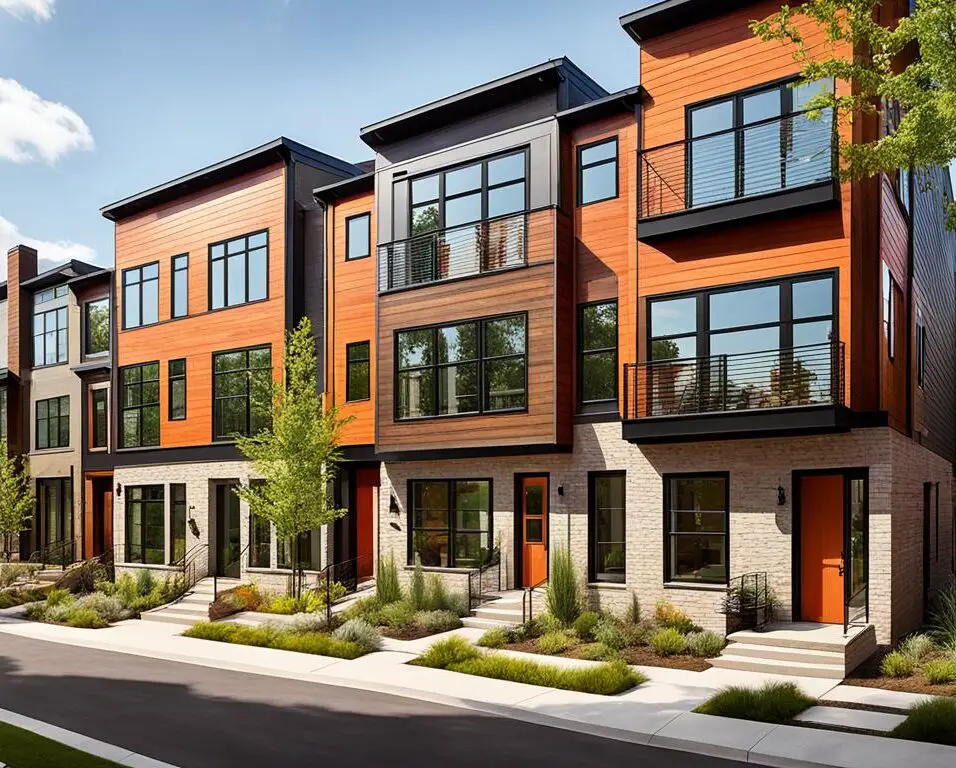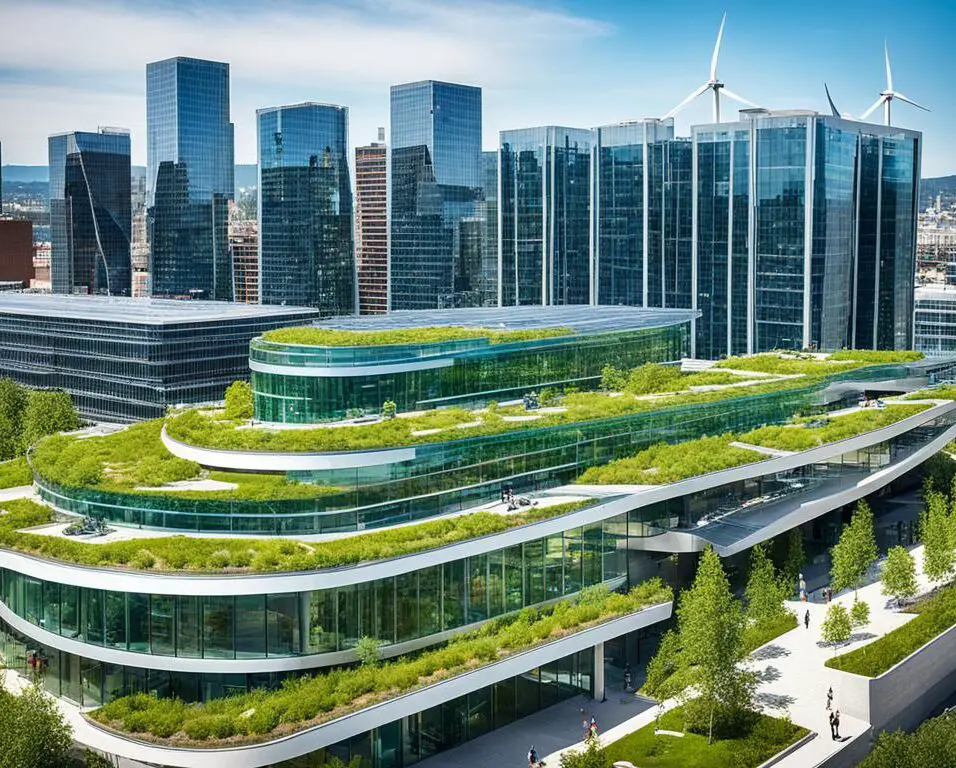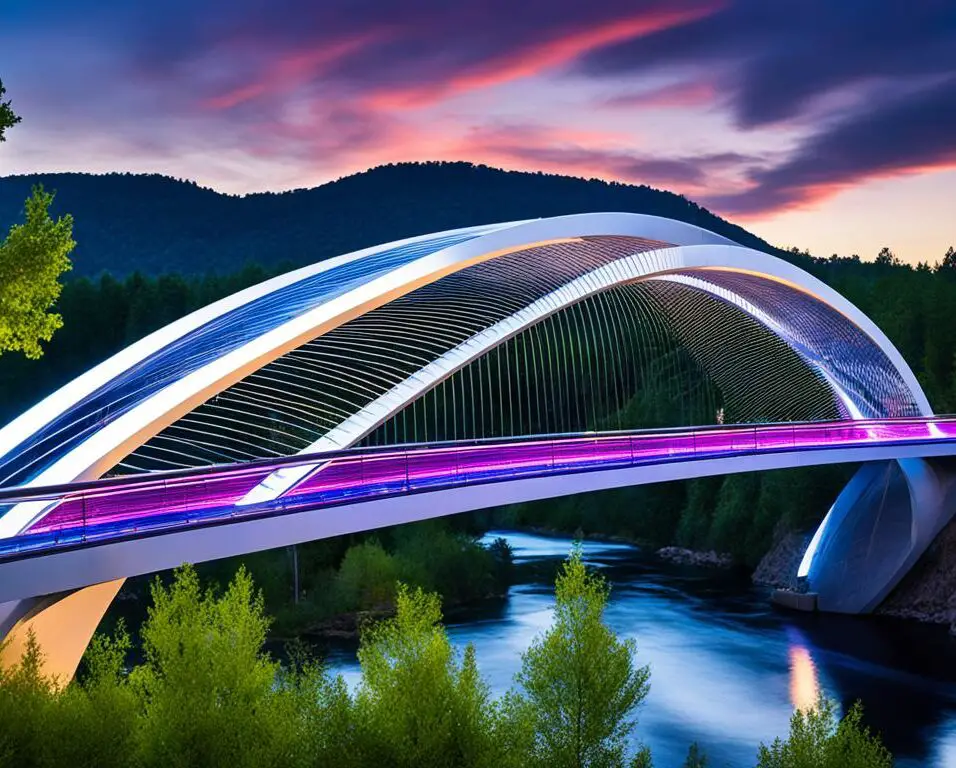Behind the Scenes of Contemporary Museum Architecture
Contemporary museum architecture is a captivating realm where innovation and design principles converge to create extraordinary cultural experiences. As a journalist specializing in art and architecture, I have had the privilege of exploring the intricate details that make these spaces truly remarkable.
From the moment you step into a contemporary museum, you are transported into a world where art and architecture harmoniously coexist. The carefully curated spatial layout, the interplay of natural light, and the incorporation of interactive elements all contribute to an immersive and engaging experience for visitors.
In this article, I will take you behind the scenes of contemporary museum architecture, unraveling the key design principles that shape these exceptional spaces. We will dive into the evolution of museum architecture, explore iconic designs that have left a lasting impact, and discuss the future trends that are set to revolutionize the way we experience museums.
Key Takeaways:
- Contemporary museum architecture is a fusion of innovation and design principles.
- The spatial layout, use of natural light, and interactive elements enhance the visitor experience.
- The evolution of museum architecture reflects changing trends and the creation of iconic spaces.
- Design principles prioritize visitor engagement and seamless navigation within museums.
- Technology integration and sustainability are driving the future of museum architecture.
The Evolution of Museum Architecture
Museum architecture has undergone a remarkable evolution over the years, reflecting changing architectural trends and an increased focus on creating iconic and immersive spaces for visitors. From the iconic Guggenheim Museum in Bilbao to the modernist design of the Museum of Modern Art in New York, each museum showcases unique architectural features that enhance the overall visitor experience.
The Guggenheim Museum in Bilbao, designed by Frank Gehry, is a prime example of how museum architecture can become an iconic landmark. Its curvaceous and organic form made of titanium panels revolutionized museum design and put Bilbao on the global art map. The building itself is considered a work of art and creates a captivating environment that harmoniously combines art and architecture.
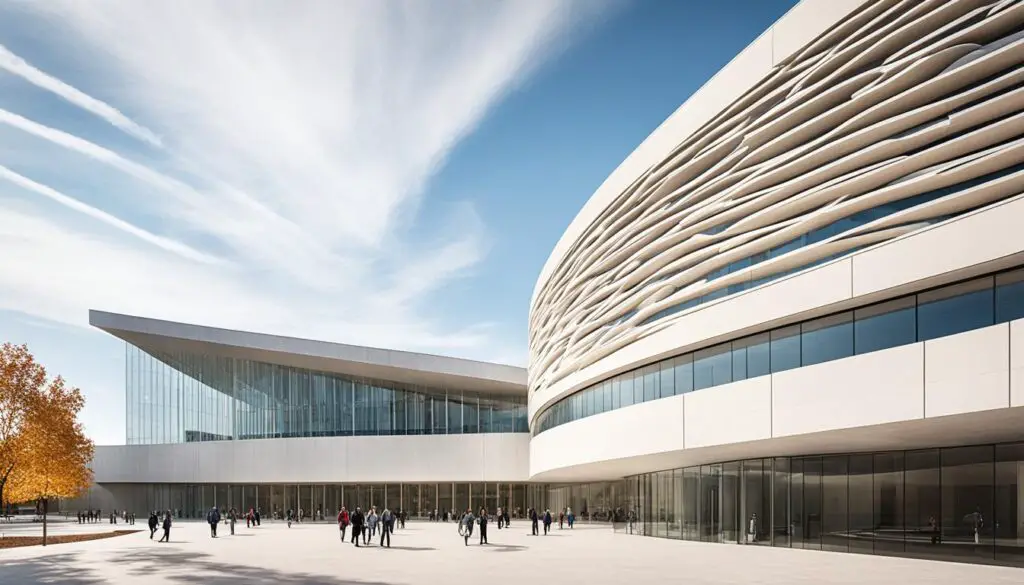
The Museum of Modern Art in New York, known as MoMA, embraces a contrasting architectural style with its modernist design. The building, designed by Yoshio Taniguchi, conveys a sense of simplicity and functionality, allowing the artwork to take center stage. With its open and airy galleries, it creates an ideal setting for visitors to engage with contemporary art.
Contemporary museum architecture goes beyond functionality; it has the power to shape our perception and experience of art. It has become a means to connect the past, present, and future through architectural design.
Architectural trends in museum design continue to evolve as architects experiment with new materials and innovative concepts. The integration of technology, sustainable practices, and immersive experiences are driving the future of museum architecture. The evolving landscape of museums transforms them into cultural landmarks that not only house art and artifacts but also serve as architectural wonders in their own right.
Key Design Principles in Contemporary Museum Architecture
Contemporary museum architecture embraces a range of design principles that prioritize visitor engagement and create immersive experiences. By carefully considering spatial layout, utilizing natural light, and incorporating interactive elements, architects are able to shape museum spaces that captivate and inspire visitors.
Spatial Layout: Seamless Flow and Navigation
Strategic spatial layout is a vital design principle in contemporary museum architecture. By creating a seamless flow and intuitive navigation within the museum, visitors are able to explore exhibitions effortlessly. Spatial design elements such as open floor plans, strategically placed entrances, and well-designed pathways guide visitors along curated routes, ensuring an immersive and enjoyable experience.
Natural Light: Enhancing Artwork and Creating Calm
The use of natural light is another crucial design principle in contemporary museum architecture. Architects carefully consider the placement of windows, skylights, and light wells to allow abundant natural light to illuminate artworks and create a sense of calm. Natural light not only enhances the visual experience of the exhibits but also provides a harmonious and tranquil environment for visitors to engage with the artwork on a deeper level.
Interactive Elements: Engaging Visitors on a Deeper Level
Contemporary museum architecture embraces the integration of interactive elements to engage visitors on a deeper level. From touchscreens and multimedia displays to immersive virtual reality experiences, these interactive elements invite visitors to actively participate and explore the exhibits. By incorporating technology-driven experiences, architects enhance visitor engagement and create memorable cultural encounters.
“The design principles in contemporary museum architecture are aimed at creating spaces that captivate and inspire visitors, allowing them to fully immerse themselves in the cultural experience.” – Jane Wilson, Architectural Digest

Incorporating these design principles into contemporary museum architecture elevates the visitor experience and fosters a deeper appreciation for art and culture. The strategic spatial layout ensures seamless navigation, while the use of natural light enhances the visual impact of the exhibits. Interactive elements, on the other hand, invite visitors to actively engage with the museum, creating a more immersive and memorable cultural experience.
The Future of Museum Architecture
Advancements in technology and a growing emphasis on sustainability are set to shape the future of museum architecture. As museums strive to provide immersive and interactive experiences, they are increasingly integrating technology such as virtual and augmented reality. These cutting-edge technologies transport visitors into a world where they can explore art and history in new and exciting ways, fostering a deeper connection with the exhibited works.
Sustainability is another crucial aspect driving the future of museum architecture. With a greater focus on eco-conscious practices, museums are incorporating sustainable building materials and energy-efficient systems into their designs. By embracing green initiatives, they not only reduce their environmental impact but also inspire visitors to consider the importance of sustainability.
Looking ahead, future trends in museum architecture will continue to revolutionize the way we experience art and culture. From interactive displays that offer personalized journeys to smart exhibition spaces that adapt based on visitor preferences, technology integration will unlock endless possibilities. Sustainable practices will also take center stage, ensuring that museums not only leave a lasting impression on visitors but also contribute to a more environmentally conscious world.



